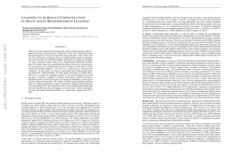Precision Electroweak Measurements on the Z Resonance
We report on the final electroweak measurements performed with data taken at the Z resonance by the experiments operating at the electron-positron colliders SLC and LEP. The data consist of 17 million Z decays accumulated by the ALEPH, DELPHI, L3 and OPAL experiments at LEP, and 600 thousand Z decays by the SLD experiment using a polarised beam at SLC. The measurements include cross-sections, forward-backward asymmetries and polarised asymmetries. The mass and width of the Z boson, $\MZ$ and $\GZ$, and its couplings to fermions, for example the $\rho$ parameter and the effective electroweak mixing angle, are precisely measured. The number of light neutrino species is determined to be 2.9840+/-0.0082. The results are compared to the predictions of the Standard Model. Electroweak radiative corrections beyond the running of the QED and QCD coupling constants are observed with a significance of five standard deviations, and in agreement with the Standard Model. Of the many Z-pole measurements, the forward-backward asymmetry in b-quark production shows the largest difference with respect to its Standard Model expectation, at the level of 2.8 standard deviations. Through radiative corrections evaluated in the framework of the Standard Model, the masses of the top quark and the W Boson are predicted. These indirect constraints are compared to the direct measurements, providing a stringent test of the Standard Model. Using in addition the direct measurements of $\Mt$ and $\MW$, the mass of the as yet unobserved Standard Model Higgs boson is predicted.
PDF Abstract